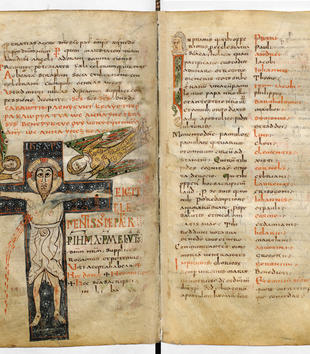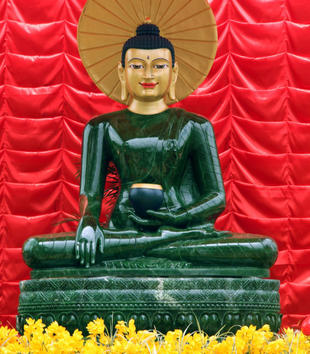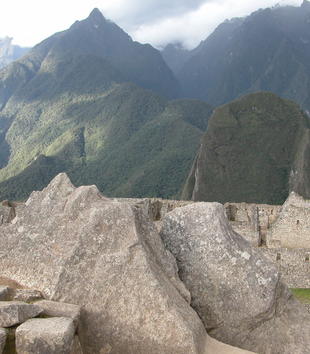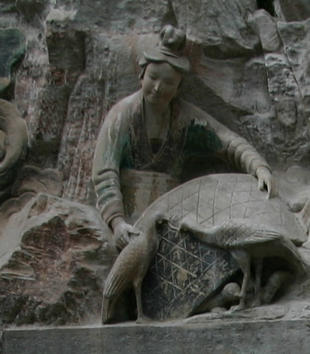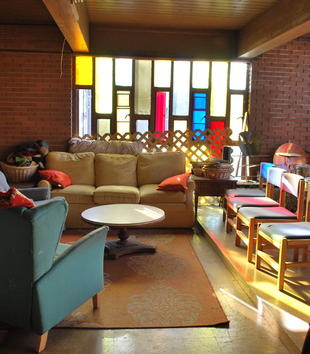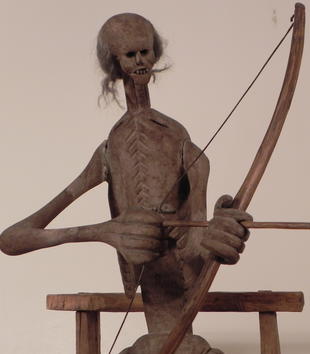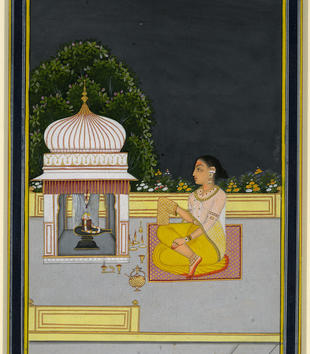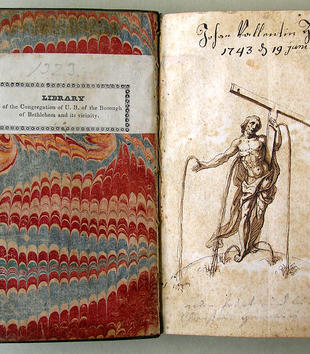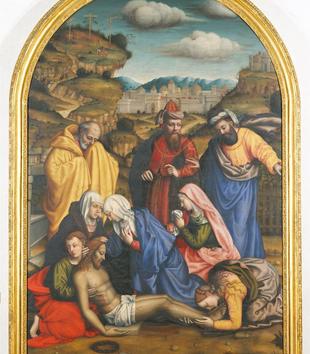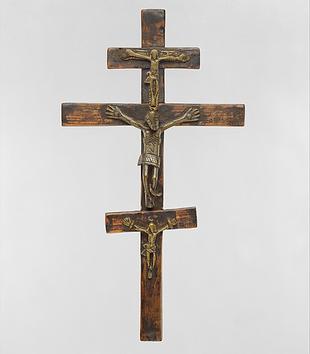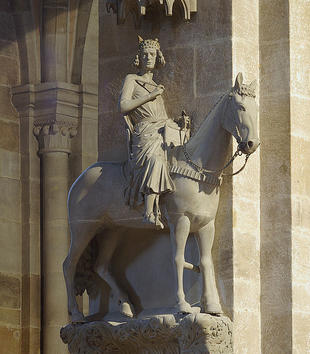You are here
Conversations: An Online Journal of the Center for the Study of Material and Visual Cultures of Religion
MAVCOR began publishing Conversations: An Online Journal of the Center for the Study of Material and Visual Cultures of Religion in 2014. In 2017 we selected a new name, MAVCOR Journal. Articles published prior to 2017 are considered part of Conversations and are listed as such under Volumes in the MAVCOR Journal menu.
-
The image of Christ on the Cross, either as an element of a narrative scene (a Crucifixion) or as an isolated object of devotion (a Crucifix) is so common in the artistic and religious traditions of the last millennium of Western art, especially but not only in the Catholic tradition, that it is seldom recognized that such images are altogether absent during the first centuries of Christianity, and remain rare at least through the eighth century of the common era.
-
This object was purchased in an upscale novelty shop catering to tourists in downtown Boulder, Colorado, in 2010 for $11.95. Although at first blush it appears to be a Sacred Heart of Jesus, on second look the banner, which reads “te amo,” Spanish for “I love you,” indicates that the heart may not belong to Jesus.
-
Numerous photographs appear to reveal what adherents are calling “mandala lights” around the Jade Buddha for Universal Peace as it makes its way around the world on a tour of Buddhist temples, monasteries, town squares, and museums.
-
For the Inca, the landscape was both sacred and animate, full of forces that demanded respect and offerings. Distant mountain peaks, called apu—a term of respect meaning “lord”—were among the most powerful of these forces.
-
To most modern visitors, the Chicken-Feeding Girl displays the stereotypical concern of a doting mother, and a number of scholars have described this image as representative of the pastoral life of the region during the Song Dynasty (960—1279 CE). While this is in fact one way to interpret the work, the Song dynasty audience for Chicken-Feeding Girl read her presence at the site in an entirely different manner.
-
Lake View Lutheran Church on Chicago’s north side is the fourth building of a congregation founded by Scandinavian immigrants in 1848. About 1960, demographic changes pushed the congregation to relocate and rebuild.
-
This dramatic death cart is an object that was used in acts of corporal penance performed by the Hermanos de la Fraternidad Piadosa de Nuestro Padre Jesús Nazareno (Brothers of the Pious Fraternity of Our Father Jesus of Nazareth).
-
This form is replicated in over 70 statues remaining at Longmen. The votive inscriptions of the statues inform us that they were given the specific title “King Udayana Image,” and not considered as a general Tathagata image, such as the Buddha Sakyamuni.
-
In this single folio, a woman is engaged in prayer. She sits on a pink cloth, her head in profile, with her body turned three-quarters to the viewer. Her right hand is covered by a golden textile, under which she counts beads on a rosary in meditation. She has garlanded the linga, or symbol of the Hindu god Shiva, and its three stripes of orange are mirrored on her forehead.
-
This is the only known drawing by John Valentine Haidt, the most important Moravian artist of the eighteenth century. It appears at the opening of a small black-leather-bound hymnal that belonged to Haidt, upon a sheet of paper lightly stained and speckled with rusty spots.
-
The Chart of the Magic Presence is the visual synopsis of the self-centered teleology of “I AM,” a new religious movement founded in 1932 by Guy and Edna Ballard.
-
My favorite underrated work of art is the Lamentation by Suor Plautilla Nelli (1523-1588), the first woman artist in Renaissance Florence with an oeuvre to go with her name. This large altar painting was created for the Dominican convent of Saint Catherine of Siena, where it stood, nearly ten feet high, on a prominent altar in the convent’s public church.
-
Elaborately crafted artworks, jealously kept insignia of power, and piously cherished devotional paraphernalia, central African crucifixes illustrate the Kongo people’s deep and enduring engagement with the visual forms and religious message of Christianity.
-
A young king sits tall in the saddle, gazing intently at something in the distance. There is apparently nowhere for the steed to go: horse and rider are perched on a leafy pedestal that is just large enough to bear their life-size forms, and they have stood frozen there since they were carved into the fabric of Bamberg Cathedral in the thirteenth century.
-
Ashley Makar spoke with Holland Cotter, co-chief art critic and a senior writer at The New York Times, at the American Academy of Religion (AAR) Conference in Chicago on November 18, 2012.
